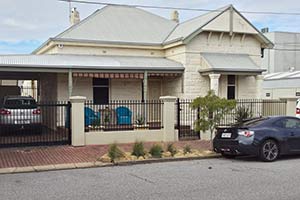
Home Sweet Home
But there is also an existing scheme that will remain in place. So, if you are looking to buy your first home, it is worth understanding how the two schemes can work for you.
We will start with the existing scheme, The First Home Super Saver Scheme (‘FHSSS’).
-
The First Home Super Saver Scheme
From 1 July 2018, the scheme is as follows:
From 1 July 2017, if you make voluntary concessional (for example salary sacrifice or self-employed contributions) to super, and voluntary non-concessional contributions to super, these can then be used to fund your first home deposit. Note that this does not include your Superannuation Guarantee payment (for most people 9.5% of your salary) that your employer must contribute to super.
From 1 July 2018, you can use those voluntary contributions, along with the associated earnings, to help you purchase your first home.
Who is eligible to do this?
1) You must never have owned property in Australia. This includes vacant land, company title, leasehold property, investment property and commercial property;
2) You have not previously asked the ATO to issue an FHSSS authority – in other words, you can only access the scheme once.
3) The home you buy you must intend to live in for at least six months within the first 12 months you own it.
One good thing though is the rules apply only to individuals. So for example if you are a couple, and one of you have previously bought a property, the other one can still take advantage of the scheme.
You can apply for a maximum of $15,000 plus associated earnings for one financial year and for a maximum of $30,000 plus associated earnings across all years.
Other key points:
– The home must be in Australia
– ‘You can sign your contract to purchase or construct your home from the date you make a valid request to release your FHSSS amounts.
– You can sign your contract to purchase or construct your home before making a valid request to release your FHSSS amounts. However, you need to have an FHSS determination before you sign and you must make a valid release request within 14 days of entering that contract.
– You can only apply for release of your FHSSS amounts once.
– After you have requested the release, it may take between 15 and 25 business days for you to receive your money.
– You then have a 12 month window (from the date you made a valid request to release the FHSS funds) in which you have to sign a contract for the purchase or construction of your new home. If you don’t do that, you will need to recontribute that amount (less any tax withheld) back into super.
– If you don’t do this, you will be subject to a flat tax of 20% on the amounts released.
– You can also apply if you have previously owned Australian property, but come under the Financial Hardship provisions. Examples are divorce, bankruptcy, loss of employment, illness, natural disaster or being eligible for early access to super.
-
The First Home Loan Deposit Scheme (‘FHLDS’)
This scheme is not yet law, but we know from the announcement that:
1) It will start on 1 January 2020 – just six months away at time of writing
2) The FHLDS will mean first home buyers will only need a 5% deposit (normally you need 20%) and so will not have to pay Lenders Mortgage Insurance – this can be around $10k for many borrowers.
3) The scheme is limited to individual borrowers earning $125k of couples earning $200k combined. This could give borrowers in States like South Australia and Tasmania and in regional areas a relative advantage as wages are generally lower there than in Sydney and Melbourne.
As the scheme is not yet law there are several unknowns:
a) Will the smaller lender take a second mortgage?
b) Will the government securitise (package up and sell) the loans?
c) The detail – for example will the earnings be based on Adjusted Earnings or just ones salary?
d) If applicants only have 5% savings and 5% from the FHLDS they still may have to pay some Lenders Mortgage Insurance for the gap between the 10% and 20% that many lenders require.
-
Some Possible Strategies
1) A parent could put $15,000 per annum into a child (and their spouses) super for this purpose, say for two years.
2) Instead of saving money via going into the bank, an individual could save the money via a combination of either salary sacrifice and non-concessional (essentially after tax) payments.
3) When the new scheme comes into play on 1 January 2020, and if you are not earning too much, then you may only need as little as a 5% deposit. The average home price in Adelaide is $455,000, so that would be only $22,750. A big win.
4) If you or your spouse are earning a lot of money, you may be better off making your first home an investment property (possibly after living in it for six months to qualify for the existing scheme and perhaps your State’s stamp duty concessions). This would make the loan interest and outgoings a tax deduction. Talk to your tax accountant first.
As always, this is general advice and may not be suitable for you. So, talk to an adviser who understands debt and superannuation.
